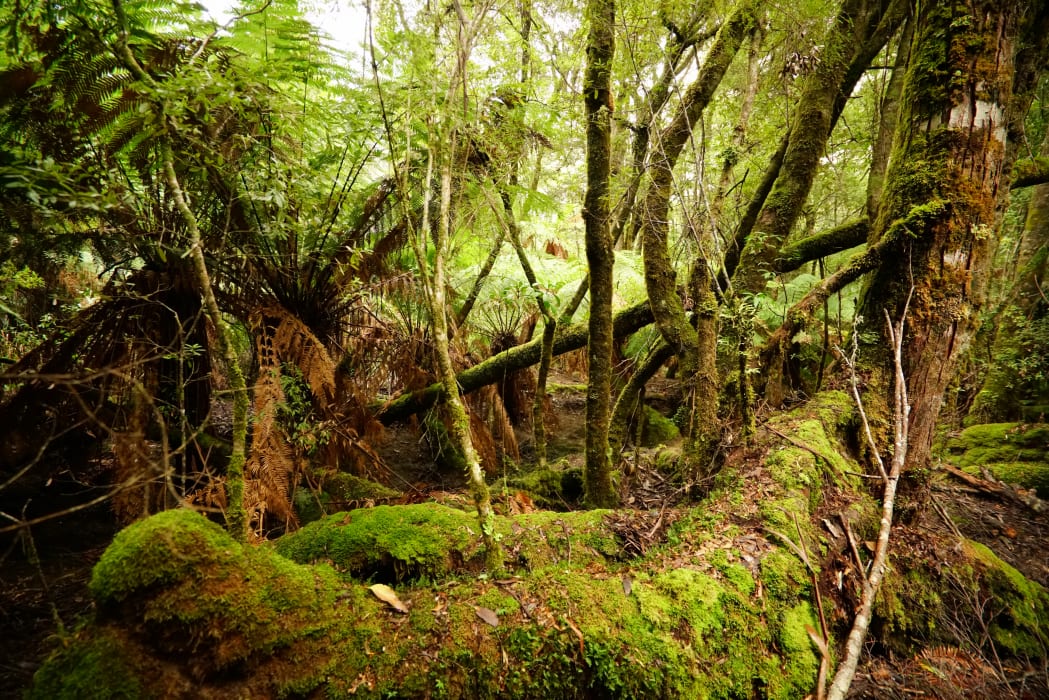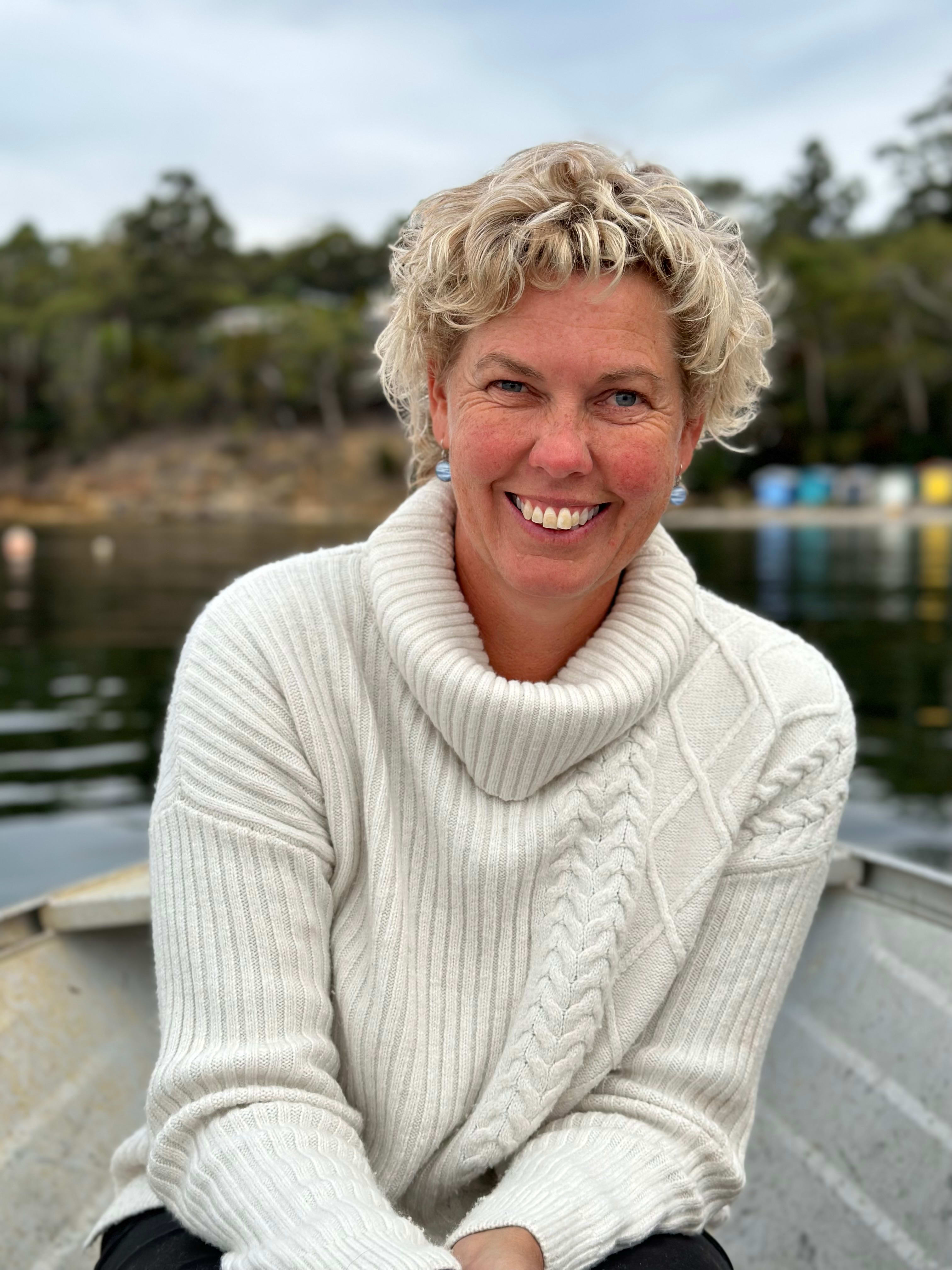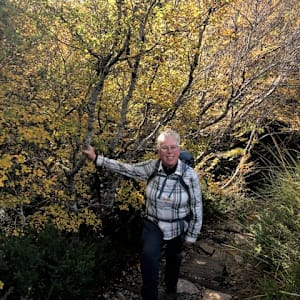photographers TIM COOPER, MILSON BARNARD and FIONA HOWIE
Picturesque Franklin, in the Huon Valley, is not a place you associate with wild nature. In springtime, apple orchards and ornamental cherries are in full blossom, amongst willows and golden patches of daffodil. Historic weatherboard cottages of all colours cheerfully line the streets. If you ignore the eucalypts on the hilltops, it is easy to imagine that this is 19th-century English countryside.
Yet just a few minutes drive from the town, through a patchwork of clearfell and regrowth, is a hidden old growth forest.
The track begins in silvery eucalypt regrowth, heavily scarred by the fires of 2020. About a hundred metres in, it abruptly transitions into wet eucalypt forest. You could trace the border between the two, the change is so sudden and complete. Vibrant greens and deep soft browns replace charred trunks.
The forest floor is living, covered in fallen logs, ferns, lichen and fungi. Trunks stretch towards the light: giant regnans, gentle myrtle, sassafras, celery top pine, tree ferns. There is even old growth leatherwood, the endemic species prized by beekeepers, rare in south-east Tasmania.
A closer look at the trunk of a tree fern reveals a second forest in miniature – fronds of finger-fern, and filmy-ferns resembling tiny trees. Bracket fungi protrude like white dinner plates from some of the larger trees.
“Land of Melukerdee People,” reads a carefully crafted timber sign. A reminder of First Nations’ stewardship, stretching back through Deep Time. For perspective, there are trees in this forest which predate the European presence that has shaped the surrounding landscape so markedly. The sign is also a hopeful reminder of human custodianship of nature – someone has gone to the trouble to create it.
Signs of historic timber-felling line the path – the tell-tale horizontal cut along the tops of giant stumps, trunks transported by rail to a some historic sawmill. Around them, the forest continues its business of growing with little sign of disturbance – a clear contrast with the clearfelled patches I grew up seeing along Tasmanian roads in the 1990s.
When it was found in 2020 by Yanti Winoto-Lewin, it seemed this special forest would be logged imminently. Now, for the second year running, it has been removed from Sustainable Timber Tasmania’s three-year harvesting schedule, most likely the result of a successful community campaign led by Winoto-Lewin through Friends of Franklin Forest. Her hope is that eventually the forest will be permanently protected.
Twenty five-year-old Yanti Winoto-Lewin recently won a national Landcare award for her leadership of Friends of Franklin Forest. She and a former housemate and fellow ecologist, Carla Bruinsma, started the group while in their final years of study. Both women had been drawn to Tasmania by its natural beauty.
While they describe themselves as arriving in the state “with guns blazing, wanting to protect the whole environment”, their approach softened over time. “What we really want to do is to try to make [the forestry debate] less polarised. When we do [guided forest] walks, we don’t talk politics at all. People can come to their own conclusions,” Winoto-Lewin said.
Although Winoto-Lewin grew up in inner Melbourne, she has fond memories of playing and building cubby houses in nearby bushland. The site had been rehabilitated from a former tip and then cared for by the local community. This example of community stewardship of nature remained with the young Yanti, influencing her approach to environmentalism.
The discovery of Franklin Forest originated from the involvement of Winoto-Lewin and Carla Bruinsma in another forest activist group, Forestry Watch, which uses citizen science and public open days to advocate for threatened forests of special value. Along with boots on the ground, discovering these forests required hours of what Bruinsma terms “desktop work” – transforming the two young women into “self-taught GIS nerds”.
Visiting a threatened forest usually requires a certain level of commitment, which can be a barrier. “Often there’ll be amazing forestry coupes, incredible rainforest, but it might be a two-hour drive to get people to look at them,” said Bruinsma.
This made Winoto-Lewin’s discovery of an old growth forest just minutes from Franklin particularly exciting. It was also a surprise. “We had people saying, ‘I run along that road all the time but had never popped into that forest’.”
After exploring the 60-hectare area, Winoto-Lewin decided to build a path through the lower, more accessible part. The first guided walk led by the pair in the forest in August 2020 drew a crowd of more than 50. Monthly walks have been held ever since. Locals are regularly involved in trackwork (we pass several on our visit). Friends of Franklin Forest also work with other local Landcare groups to care for the area, tackling gorse around the old timber mill site.
. . .
The day I joined the walk, it was a small, family-friendly ramble, attended by an equal split of Huon Valley locals and Hobartians. We move at an unhurried pace that matches that of the forest.
Along the track is handwritten interpretation identifying different forest species, several in children’s writing. Winoto-Lewin and Bruinsma draw our attention to a nurse tree lining the forest floor, which sprouts a young myrtle along with a host of smaller plants. Such naturally fallen trees provide seeds with a safe place to germinate, protecting them from introduced lyrebirds which tend to churn up the forest floor. My partner and I have noted this phenomenon before, particularly in myrtle forest; the remarkable, twisted shapes retained by the roots of trees as their cradle gradually rots away beneath them. After logging, any potential nurse trees left behind would tend to be cleared up during customary burns, carried out in the name of regeneration.
I learn that tree ferns are named Dicksonia antarctica because of fossils discovered in Antarctica, a reminder of ancient Gondwanic origins.
Further on, a large leatherwood trunk divides into two graceful curves. It looks to be several hundred years old. In late summer, the ground underneath will be covered with creamy fragrant flowers. I’ve only seen leatherwood in remote parts of north-east Tasmania before. It is special to see it so close to home.
The giant sentinels of the forest also offer potential shelter to two threatened species, swift parrots and masked owls, both of which need large, hollow-bearing trees.
. . .
The power of this forest to educate gently is important to Yanti Winoto-Lewin. “When someone hears about a threatened forest on the news, if they’ve visited Franklin Forest, they can understand what sort of place is being talked about. This is what people are fighting for … or seeing as a resource.”
Carla Bruinsma believes that connection to nature is a fundamental part of being human, despite the erosion of these ties in modern societies. “In facing climate change and biodiversity loss, connecting people to nature is hugely important,” she says. Each new visitor increases the chance that this forest will be protected.
As Winoto-Lewin says, “We’re pummelled with sad environmental stories. If you’re not actually getting out and feeling the joy of being in a forest, you just get all the heaviness.
“It’s not all gone. There’s still a lot we can do.”

Fiona Howie is a teacher of English and history with a Bachelor of Advanced Arts (Honours) from the University of Sydney. She lives on the sunny eastern shore of nipaluna/Hobart with her partner and infant son.









